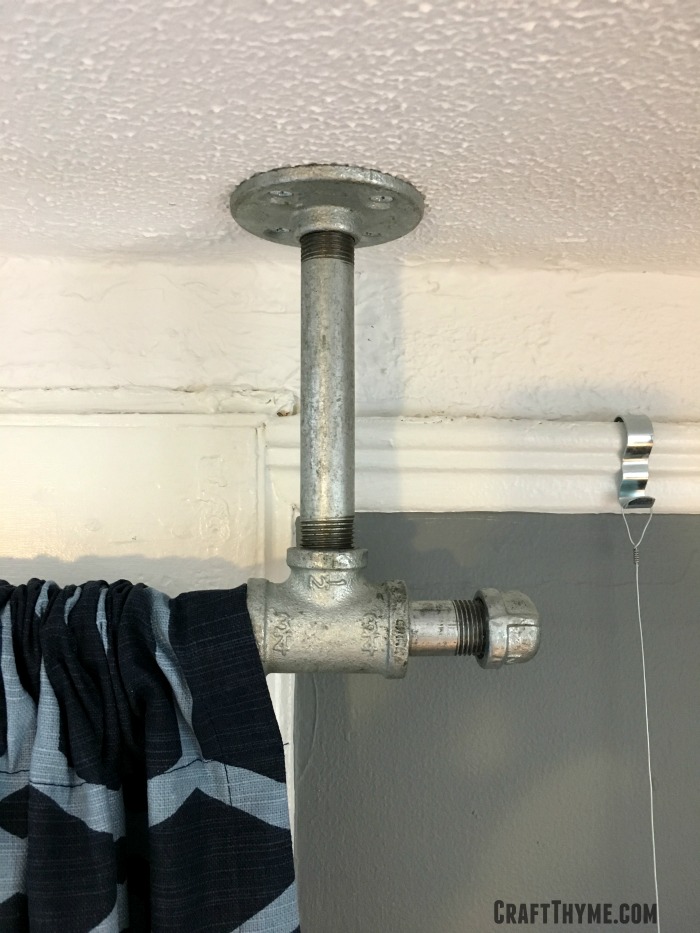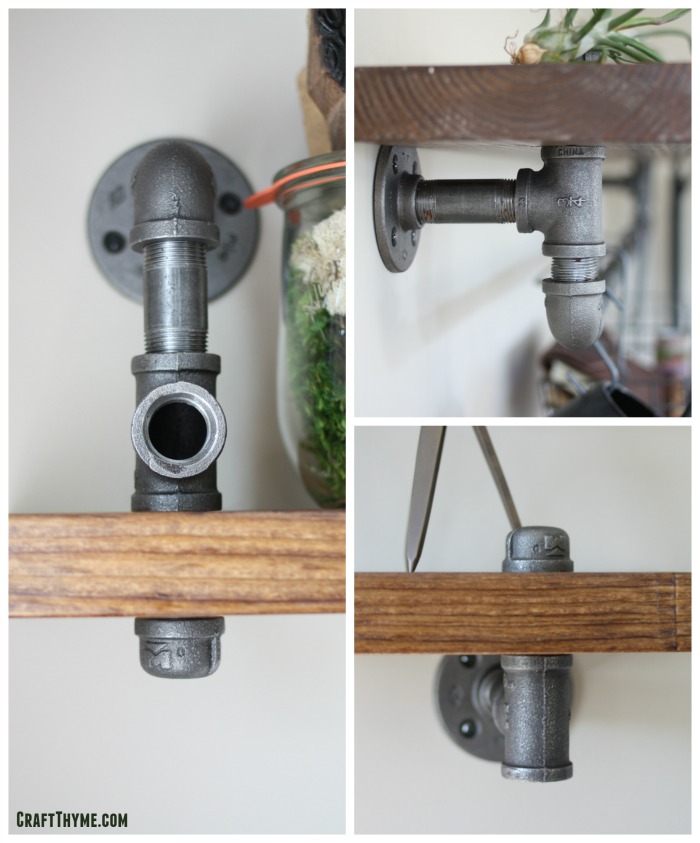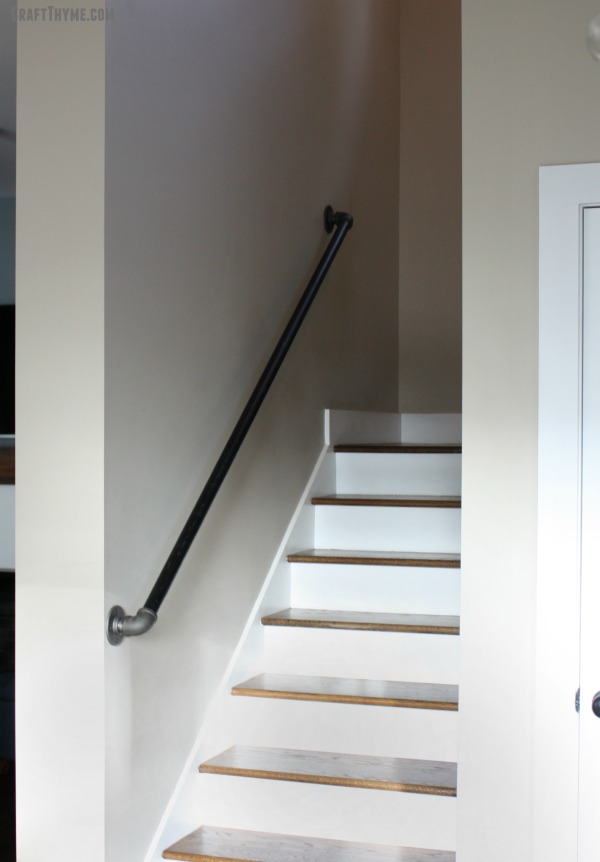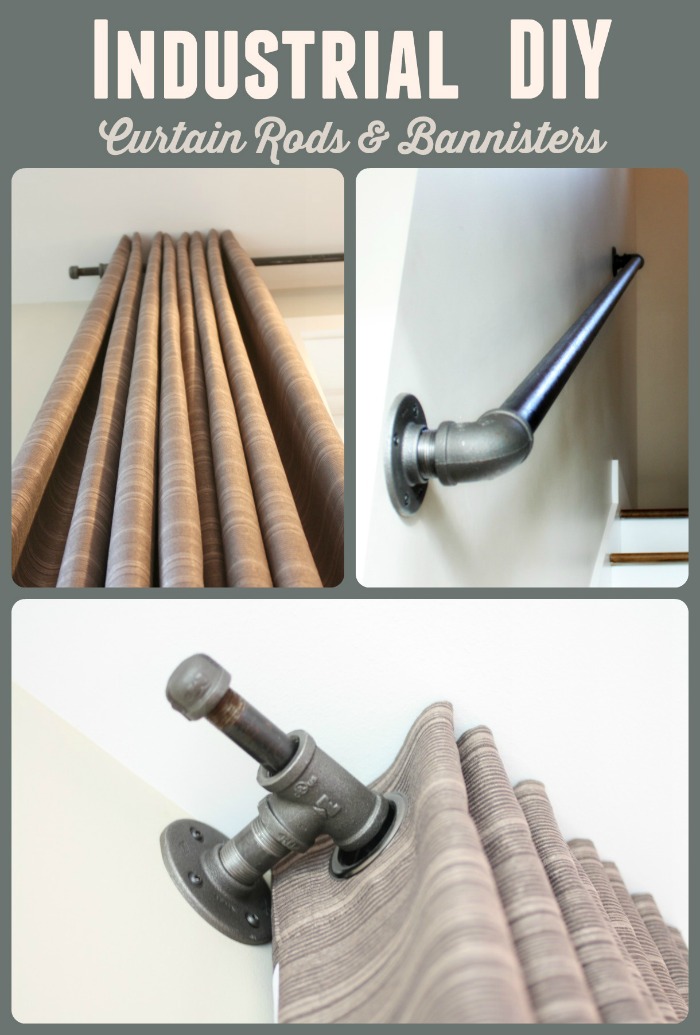
In our previous house we used black iron pipe for almost every single fixture. From pipe curtain rods to toilet paper holders we made them all. Black iron pipe curtain rods were economical, easy to install, and fit the industrial decor of the previous home. Once we moved down the street to a 1927 fixer upper we just didn’t feel the black iron was doing it for us. Still it is hard to beat the price of a pipe curtain rod… Especially when you are looking at putting curtains and blinds over 54 windows (le sigh). In comes our fancy take on pipe curtain rods with a couple of fresh designs in galvanized (silver) pipe.
Using galvanized pipe for curtain rods is not quite as economical as black iron, but still a shit-ton better than pre-made curtains rods, especially in the 8+ ft lengths needed. We originally made replicas of the former pipe curtain rods that you can read about here. However, it just wasn’t working for the installation and new space. We needed something more ‘interesting’. I came up with the random idea to install them from the ceiling. Adam took that idea and ran with it! He even came up with a few new end joints.
As typical for us we got most of the fittings from Zoro (affiliate links to follow) and got the actual lengths of pipe custom cut at our local home improvement store.
Supplies T- Connected Ceiling Mount Pipe Curtain Rod
- 2 – 1/2″ Galvanized Floor Flange
- 2 – 5-1/2″ x 1/2″ Galvanized Steel Nipple
- 2 – 3/4″ x 3/4″ x 1/2″ Galvanized Reducing Tee
- 2 – 1/2″ Galvanized Pipe Cap
Supplies Curved Ceiling Mount Pipe Curtain Rod
- 2 – 1/2″ Galvanized Floor Flange
- 2 – 5-1/2″ x 1/2″ Galvanized Steel Nipple
- 2 – 1/2″ Galvanized 90 Degree Elbow

T – Connected Galvanized Pipe Curtain Rod
Step 1
Usually Adam writes these instructions since these pipe curtain rod styles are his creations, but I thought I would take a stab at it. Plus how often do I get to write about nipples, rods, and elbows? Ah yeah!
You’ll need to make two brackets to hold your rod.
- Connect a nipple to a flange.
- Connect a tee to the other side of the nipple.
- Hand-tighten everything
Step 2
Install one of the brackets in position from the ceiling. Use appropriate fasteners. We were able to hook into the lathe behind the plaster, but I highly suggest at least one or two drywall anchors meant to hold a lot of weight. Maybe that is because we have small kids and I just picture them hanging on the curtains regularly…
If you are working solo then mount both brackets, measure, and try to line everything up so you can simply slide your rod into place when done. There is a little wiggle room on the brackets but you need to try to get them the same distance away from the wall and left/right from the window.
If you have two people it can be easier to mount one bracket where you want it and slide the rod with second bracket into place, then have your helper mount the second bracket. It is a lot easier to measure the distance from your window in multiple places when the rod is already in. (Insert giggles about rods)
Step 3
Slide the rod in to make sure you mounted everything correctly then back out one side and put your curtains on. Then cap both ends. Before you ask, yes, they will shift a bit in the bracket. It has never bothered me. When I open the right side it shifts right, then it goes right back to center when I open the left. If you really hate the shifting aspect you could glue them in place (Use some construction adhesive meant for metal) or follow design option #2.
Ceiling Mounted Curved Pipe Curtain Rod
Step 1
Just like previously, you’ll need to make two brackets to hold your rod.
- Connect a nipple to a flange.
- Connect an elbow to the other side of the nipple.
- Hand-tighten everything
Step 2
This is where the assembly differs, step 2 & 3 get combined into one arm weakening installation. Frankly although it adds a bit in installation time we highly suggest giving your galvanized pipe curtain rod a test fit. This entails assembling the whole rod, sans curtain. To assemble simply put your elbows brackets on both ends of your rod.
You will likely need a helper at this point to help hold the curtain rod to the ceiling. We checked to make sure we were centered with the windows and marked our mounting holes. You can just go balls out if you like and do the next steps without a dry run, but I think you’ll be happier with the outcome if you test the assembly out first.
Then the fun begins! You will need to take one elbow bracket off put and put your curtains on the rod. Then screw the bracket back in place assembling the whole thing completely. Yes, now you will need to lift the whole mother-trucker into place, while not yelling at your spouse helper, and mount it. While not horrifically heavy, you are still going to want to get that portion over quickly.
After that you can stand back and admire your handiwork! Oh yeah, that really is a fabulous DIY pulley light we will be showing you soon!










































